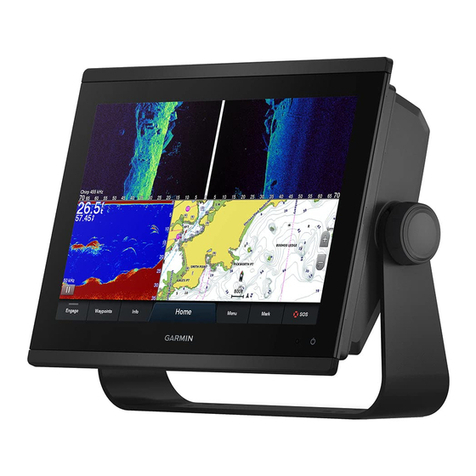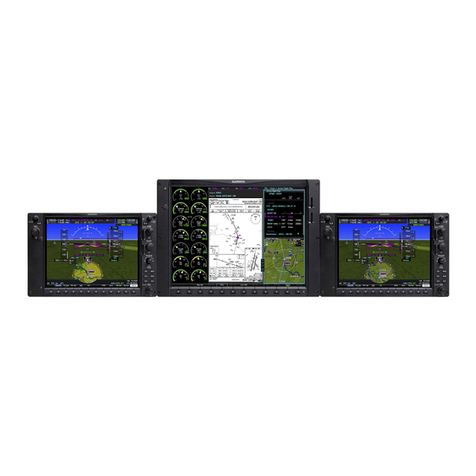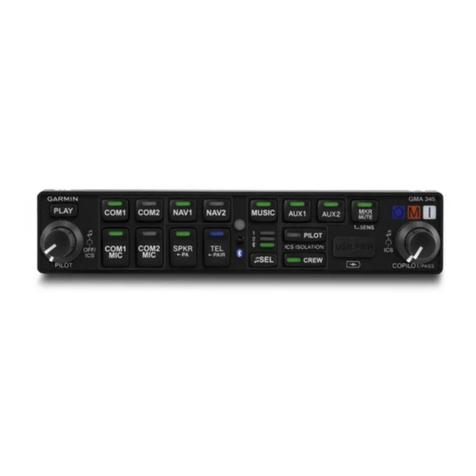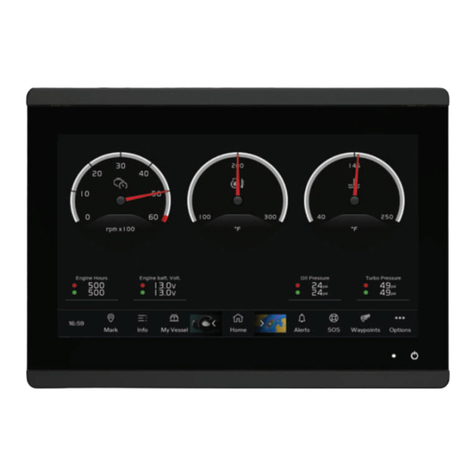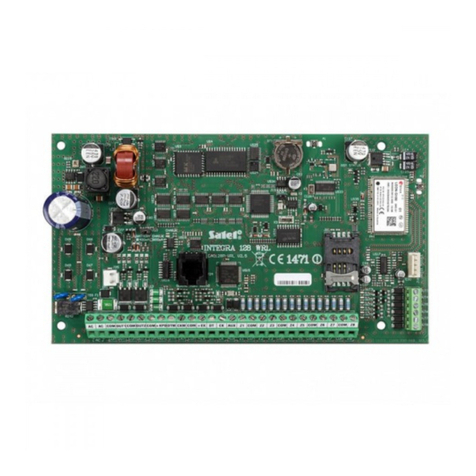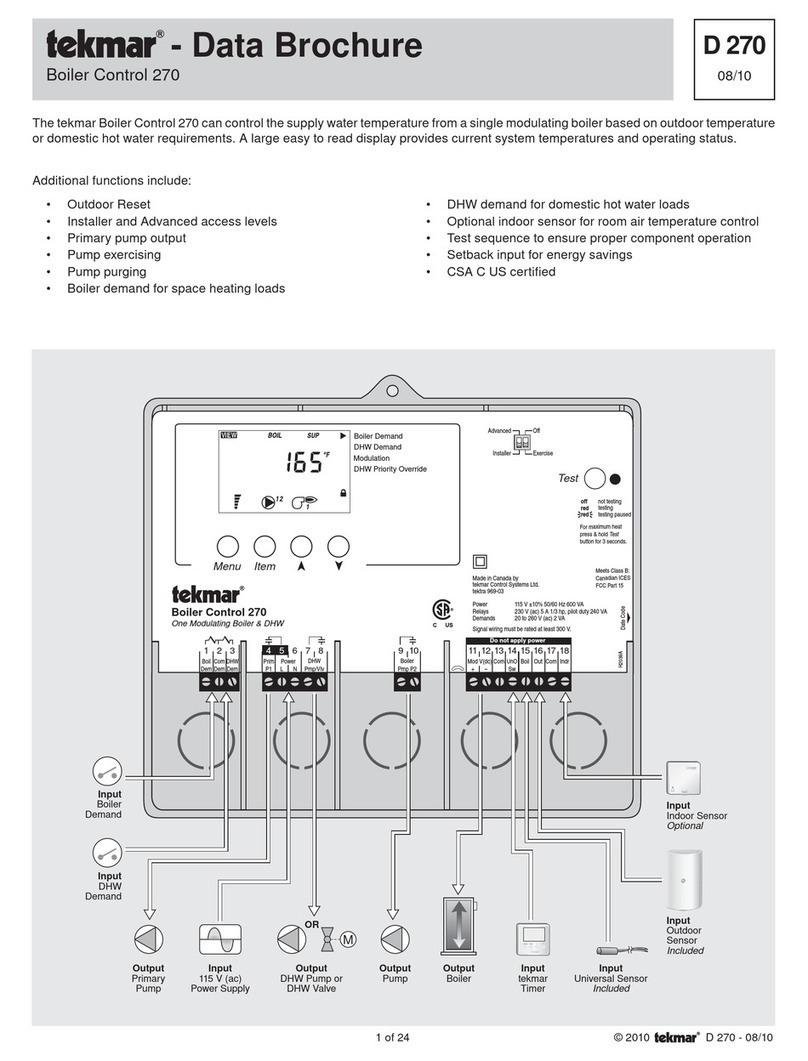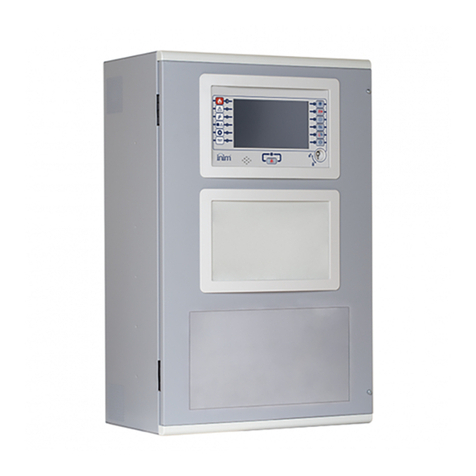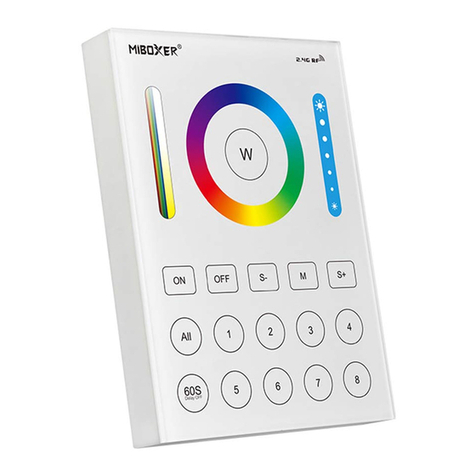Garmin 340 Manual

1
Audio Panel
pilot’s guide
GMA 340

2
Front Panel Controls (GMA 340)
Front Panel Controls (GMA 340 Dual ADF)
Front Panel Controls (GMA 340H)

3
Function Selection Switches
The left small knob (5, 7) on all units controls ON/OFF function.
1. Marker Beacon amps
2. Marker Beacon Receiver Audio Select/Mute Button
3. Marker Beacon Receiver Sensitivity Indicator ED’s
4. Marker Beacon Receiver Sensitivity Selection Button
5. Pilot Intercom System (ICS) Volume (Also Passenger Volume on 340H)
6. Pilot ICS Voice Activated (VOX) Intercom Squelch evel
7. Copilot and Passenger ICS Volume Control (Pull out for Passenger Volume)
8. Copilot and Passenger VOX Intercom Squelch evel
9. Crew Isolation Intercom Mode Button
10. Pilot Isolation Intercom Mode Button
11. Passenger Address (PA) Function Button
12. Speaker Function Button
13. Transceiver Audio Selector Buttons (COM 1, COM 2, COM 3)
14. Transmitter (Audio/Mic) Selection Buttons
15. Split COM Button (Not Available in Dual ADF)
16. Aircraft Radio Audio Selection Buttons (NAV 1, NAV 2, DME, ADF 1, ADF 2)
17. Annunciator Test Button
18. ocking Screw Access
19. Photocell – Automatic Annunciator Dimming
MKR
BC
ICS
COM/
AV

4
On, Off, and Failsafe Operation
The GMA 340 is powered off when the left small knob (5, 7) is rotated fully CCW into the detent.
To turn the unit on rotate the knob clockwise past the click. The left small knobs also functions as the
pilot or copilot’s ICS volume control on the appropriate unit. A failsafe circuit connects the pilot’s headset
and microphone directly to COM 1 in case the power is interrupted or the unit is turned off.
Lighting
ED Button annunciator and marker beacon lamp intensity are controlled automatically by a built-in
photocell on the front panel. Nomenclature backlighting is controlled by the aircraft dimmer buss.
Transceivers
Audio level is controlled by the selected COM radio volume control.
Selection of either COM 1, COM 2, or COM 3 (13) for both MIC and audio source is accomplished
by pressing either COM 1 MIC, COM 2 MIC, or COM 3 MIC (14). The active com audio is always heard
on the headphones.
Additionally, each audio source can be selected independently by pressing COM 1, COM 2, or COM 3
(13). When selected in this way, they remain active as audio sources regardless of which transceiver has
been selected for microphone use.
When a microphone is keyed, the active transceiver’s MIC button ED blinks approximately once per
second to indicate that the radio is transmitting.
Split COM ( ot Available on Dual ADF)
Pressing the COM 1/2 button (15) activates the Split COM function. When this mode is active,
COM 1 is dedicated solely to the pilot for MIC/audio while COM 2 is dedicated to the copilot for MIC/
audio. The pilot and copilot can simultaneously transmit in this mode over separate radios. Both pilots
can still listen to COM 3, NAV 1, NAV 2, DME, ADF, and MKR as selected. The Split COM mode is
cancelled by pressing the COM 1/2 button a second time.
When in the Split COM mode the copilot may make PA announcements while the pilot continues
using COM 1 independently. When the PA button is pressed after the Split COM mode is activated, the
copilot’s mic is output over the cabin speaker when keyed. A second press of the PA button returns the
copilot to normal Split COM operation.
If the COM radios utilize a “transmit interloc ” system, the Split COM
function may require that this feature is enabled. Refer to the radio’s
installation manual for guidance. GARMIN ma es no expressed or implied
guarantees regarding the suitability of the Split COM feature in a given
installation.
F
F

5
Com Swap Function
The GMA 340 allows the use of a remote mounted switch (typically on the yoke) to alternately
transfer the active microphone back and forth between COM 1 and COM 2. Pressing the remote switch
will have no affect if COM 3 is the active transceiver. Ask your installing agency for details.
Aircraft Radios & avigation
Audio level is controlled by the selected NAV radio volume control.
Pressing NAV 1, NAV 2, DME, ADF 1, ADF 2(16), or MKR (2) (see MKR Beacon Receiver, page 8)
selects each audio source. A second button press deselects the audio.
In addition, the GMA 340 provides inputs for an unswitched aircraft radio (TE RINGER) and an
unmuted, unswitched aircraft radio (A T WRN).
Speaker Output
Pressing the SPKR button (12) selects aircraft
radios over the cabin speaker. The speaker output is
muted when a COM microphone is keyed. The GMA 340 speaker output level can be adjusted by your
installing agency.
PA Function
The PA mode is activated by pressing the PA button (11). Then, when either the pilot’s or copilot’s
microphone is keyed, the corresponding mic audio is heard over the cabin speaker. If the SPKR button is
also active, then any selected speaker audio is muted while the microphone is keyed. The SPKR button
does not have to be previously active in order to use the PA function. Pilot and copilot PA microphone
speaker levels are adjustable by your installing agency.
Auxiliary Entertainment Inputs
The GMA 340 and 340H provide two stereo entertainment inputs: MUSIC 1 and MUSIC 2. The 340
Dual ADF has only MUSIC 1. MUSIC 1 is soft-muted during all aircraft radio activity and normally
during ICS activity. MUSIC 2 is a non-muted input. These inputs are compatible with popular portable
entertainment devices such as cassette tape or CD players. The headphone outputs of these devices are
used and plugged into MUSIC 1 or MUSIC 2. Two 3.5 mm stereo phone jacks should be installed in a
convenient location for this purpose. MUSIC 1 and MUSIC 2 have characteristics that are affected by the
active intercom mode. Refer to the table on page 7.
F

6
Intercom System (ICS) (Pilot and Copilot functions are reversed on the
340H)
Intercom volume and squelch (VOX) are adjusted using the following front panel knobs:
•
LEFT SMALL KNOB — Unit ON/OFF power control and Pilot ICS volume. Full
CCW DETENT position is OFF.
•
LEFT LARGE KNOB — Pilot ICS mic VOX squelch level. CW rotation increases the
amount of mic audio (VOX level) required to break squelch. Full CCW is the “hot mic”
position.
•
RIGHT SMALL KNOB — IN position: Copilot ICS volume. OUT position:
Passenger ICS volume.
•
RIGHT LARGE KNOB — Copilot and passenger mic VOX squelch level. CW
rotation increases the amount of mic audio (VOX level) required to break squelch. Fully
CCW is the “HOT MIC” position.
Each of the six microphone inputs have dedicated VOX circuits ensuring that only the active
microphone(s) is/are heard when squelch is broken. This represents a vast improvement over the party-
line systems and reduces the amount of background noise in the headphones during cockpit communica-
tions. After the operator has stopped talking, the intercom channel remains momentarily open to avoid
closure between words or normal pauses.
The GMA 340 provides three intercom modes: PI OT, CREW and A . The mode selection is
accomplished using the PI OT and/or CREW buttons.
Pressing a mode button activates the corresponding ICS mode. Pressing again deactivates the mode.
The operator can switch directly from PI OT to CREW or from CREW to PI OT by pressing the other
mode button. The A mode is active when neither PI OT nor CREW ED are lit. To switch from
PI OT to CREW mode, press the CREW button; from CREW to PI OT, press the PI OT button. An ED
ON indicates the isolation mode is active.

7
•
PILOT modeisolates the pilot from everyone else and dedicates the aircraft radios to the
pilot exclusively. The copilot and passengers share communication between themselves but
cannot communicate with the pilot or hear the aircraft radios.
•
CREW modeplaces the pilot and copilot on a common ICS communication channel.
The passengers are on their own intercom channel and can communicate with each other, but
cannot communicate with the crew or hear the aircraft radios.
•
ALL modeallows full intercom communication between everyone plugged in to the GMA
340. Aircraft radios are heard by all.
•
MUSIC 1 and MUSIC 2 stereo entertainment inputs are affected by the intercom mode
selected.
The following table summarizes the ICS operation for the different modes supported by the
GMA 340:
MUSIC 1 is normally muted during ICS activity. However an installation option is available to disable
ICS MUTE. Then muting of MUSIC 1 will not occur due to ICS activity. A panel mounted switch may be
installed for this function. The MUSIC 1 mute trip level is adjustable by the installing agency.
Mono/Stereo Headset
The use of stereo headsets is highly recommended.
If monaural headsets are plugged into stereo jac s that do not have a switch
installed, the unit will not be damaged.
If the pilot uses a monaural headset in a stereo jac , no audio will be heard
during failsafe operation. When using a monaural headset the pilot’s jac must
be equipped with a stereo/mono switch and it must be set to the ‘mono’ position
for proper failsafe operation.
A person listening on a monaural headset will hear only the left channel from the GMA 340 in both ears. If
a monaural headset is used at one of the passenger positions, any other passenger listening on a stereo headset
will hear audio in their left ear only, unless their headset has a stereo/mono switch and it is set for mono.
PILOT HEARS COPILOT HEARS PASSENGER
HEARS
MUSIC 1 MUTING
TRIGGERED BY
Selected Radios.
Pilot.
Copilot.
Passengers.
MUSIC 1.
Passengers.
Copilot.
MUSIC 1.
Copilot or passenger
ICS activity.
Selected Radios.
Pilot.
Copilot.
MUSIC 1.
Selected Radios.
Copilot. Pilot.
MUSIC 1.
Passengers.
MUSIC 2.
(MUSIC 1 in Dual
ADF
Aircraft radio activity.
MKR activity.
Pilot or Copilot ICS
activity.
Selected Radios.
Pilot.
Copilot.
Passengers.
MUSIC 1.
Selected Radios.
Pilot.
Copilot.
Passengers.
MUSIC 1.
Selected Radios.
Pilot.
Copilot.
Passengers.
MUSIC 1.
Aircraft radio activity.
MKR activity.
ICS activity.
MODE
ALL
LED's
OFF)
CREW
(LED
LIT)
PILOT
(LED
LIT)
F
F

8
Marker Beacon Receiver
The marker beacon is used as part of an I S approach, and in certain instances, to identify an airway.
In addition to the normal marker beacon functions, the GMA 340 provides an audio muting function. The
lamps illuminate, and an associated keyed-tone is heard when MKR audio is selected, when the aircraft
passes over a 75 MHz marker beacon transmitter.
The lamp and audio keying for I S approach operation are summarized below:
The marker beacon audio level is aligned at the factory to produce its rated audio output. However,
the output level is adjustable by your avionics installing agency.
The GMA 340’s marker beacon receiver controls are located on the left side of the front panel (1
through 4). The SENS button selects either high or low sensitivity as indicated by the HI or O ED
being lit. ow sensitivity is used on I S approaches while high sensitivity allows operation over airway
markers or to get an earlier indication of nearing the outer marker during an approach.
The marker audio is selected initially by pressing the MKR/mute button (2). If no marker beacon
signal is received, then pressing again will deselect the marker audio. This operation is similar to
selecting any other audio source on the GMA 340. However, if the second button press occurs while a
marker beacon signal is received, then the marker audio is muted but not deselected. The button’s ED
will remain lit to indicate that the source is still selected.
The GMA 340’s 6PDUW0XWH
70
function then monitors the marker signal and automatically unmutes
the audio when the current marker signal is no longer being received.
In all cases, the marker beacon lamps operate independently of any audio selection and cannot be
turned off. The GMA 340 can drive external marker lamps if required.
Audio
Fr qu ncy Audio K ying Lamp Actuat d
400 Hz Blue (Outer)
1300 Hz Amber (Middle)
3000 Hz White (Airway/Inner)

9
Limit d Warranty
GARMIN Corporation warrants this product to be free from defects in materials and workmanship for
one year from the date of purchase. GARMIN will, at its sole option, repair or replace any components
which fail in normal use. Such repairs or replacement will be made at no charge to the customer for parts
or labor. The customer is, however, responsible for any transportation costs. This warranty does not
cover failures due to abuse, misuse, accident or unauthorized alteration or repairs.
THE WARRANTIES AND REMEDIES CONTAINED HEREIN ARE EXC USIVE AND IN IEU OF A
OTHER WARRANTIES EXPRESSED OR IMP IED, INC UDING ANY IABI ITY ARISING UNDER
WARRANTY OF MERCHANTABI ITY OR FITNESS FOR A PARTICU AR PURPOSE, STATUTORY OR
OTHERWISE. THIS WARRANTY GIVES YOU SPECIFIC EGA RIGHTS, WHICH MAY VARY FROM
STATE TO STATE.
IN NO EVENT SHA GARMIN BE IAB E FOR ANY INCIDENTA , SPECIA , INDIRECT OR
CONSEQUENTIA DAMAGES, WHETHER RESU TING FROM THE USE, MISUSE OR INABI ITY TO
USE THIS PRODUCT OR FROM DEFECTS IN THE PRODUCT. SOME STATES DO NOT A OW THE
EXC USIONS OF INCIDENTA OR CONSEQUENTIA DAMAGES, SO THE ABOVE IMITATIONS MAY
NOT APP Y TO YOU.
To obtain warranty service, call the GARMIN Customer Service department (913/397.8200) for a
returned merchandise tracking number. The unit should be securely packaged with the tracking number
clearly marked on the outside of the package, and sent freight prepaid and insured to a GARMIN warranty
service station. A copy of the original sales receipt is required as the proof of purchase for warranty
repairs. GARMIN retains the exclusive right to repair or replace the unit or software or offer a full refund
of the purchase price at its sole discretion. SUCH REMEDY SHA BE YOUR SO E AND EXC USIVE
REMEDY FOR ANY BREACH OF WARRANTY.

10

11
GMA 340
GMA 340 Dual ADF
GMA 340H

12
© 2001 GARMIN Corporation
GARMIN International, Inc.
1200 East 151
st
Street, Olathe, Kansas 66062, U.S.A.
GARMIN (Europe) td.
Unit 5, The Quadrangle, Abbey Park Industrial Estate, Romsey, SO51 9AQ, U.K.
GARMIN Corporation
No. 68, Jangshu 2
nd
Road, Shijr, Taipei County, Taiwan
www.garmin.com
Part Number 190-00149-10 Rev. C
This manual suits for next models
1
Table of contents
Other Garmin Control Panel manuals
Popular Control Panel manuals by other brands
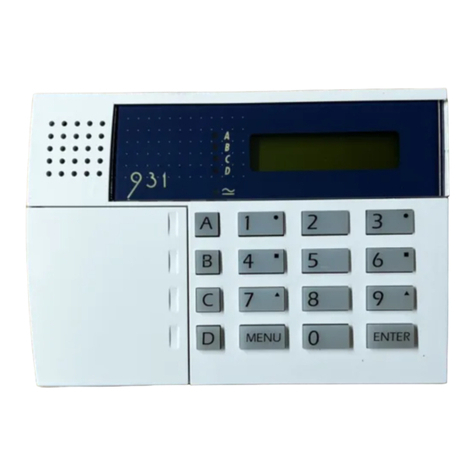
Scantronic
Scantronic 8136 user guide
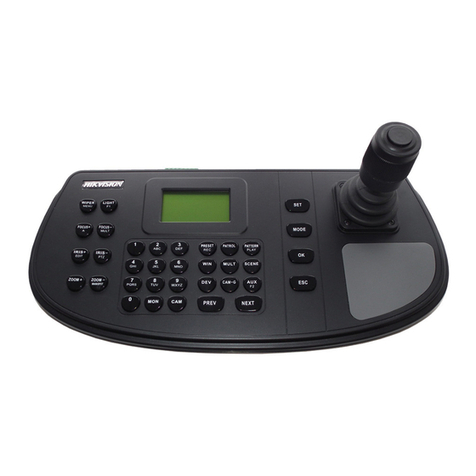
HIK VISION
HIK VISION 1006KI How to use
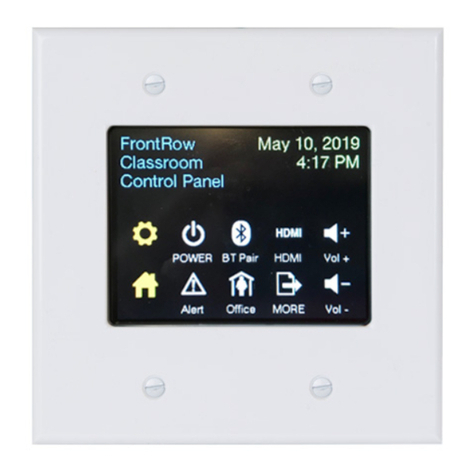
FrontRow
FrontRow CB6000 Installer's guide

C & K Systems
C & K Systems Securit 800L Specfications

System air
System air CD Control Panel Service Menu
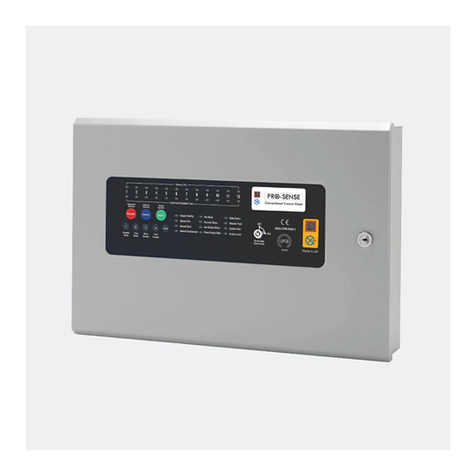
Ceasefire
Ceasefire CFX-Plus Pro-Sense 8 Installation, commissioning & operating manual
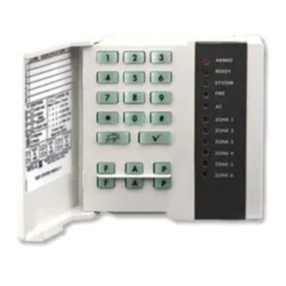
NAPCO
NAPCO XP-400 installation instructions

DSC
DSC PowerSeries PC1616 installation guide
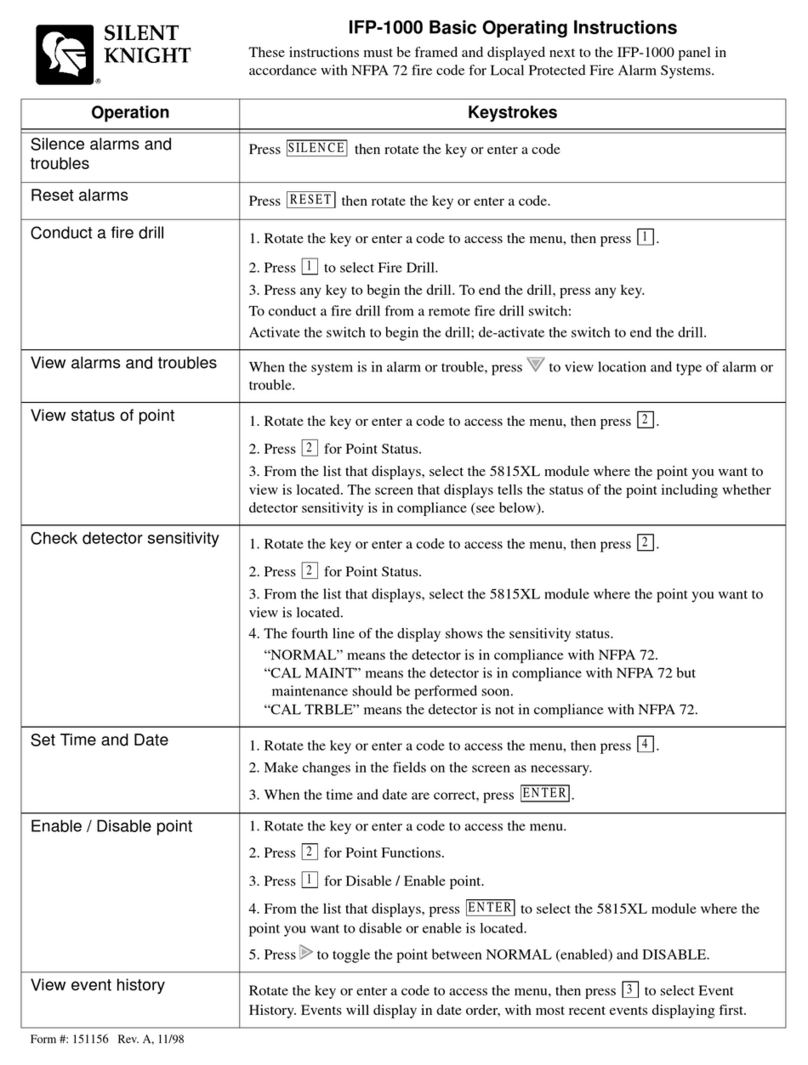
SILENT KNIGHT
SILENT KNIGHT IFP-1000 Basic operating instructions
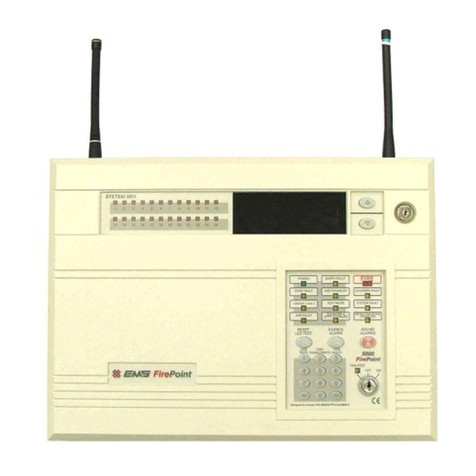
EMS
EMS FirePoint System 5000 user manual
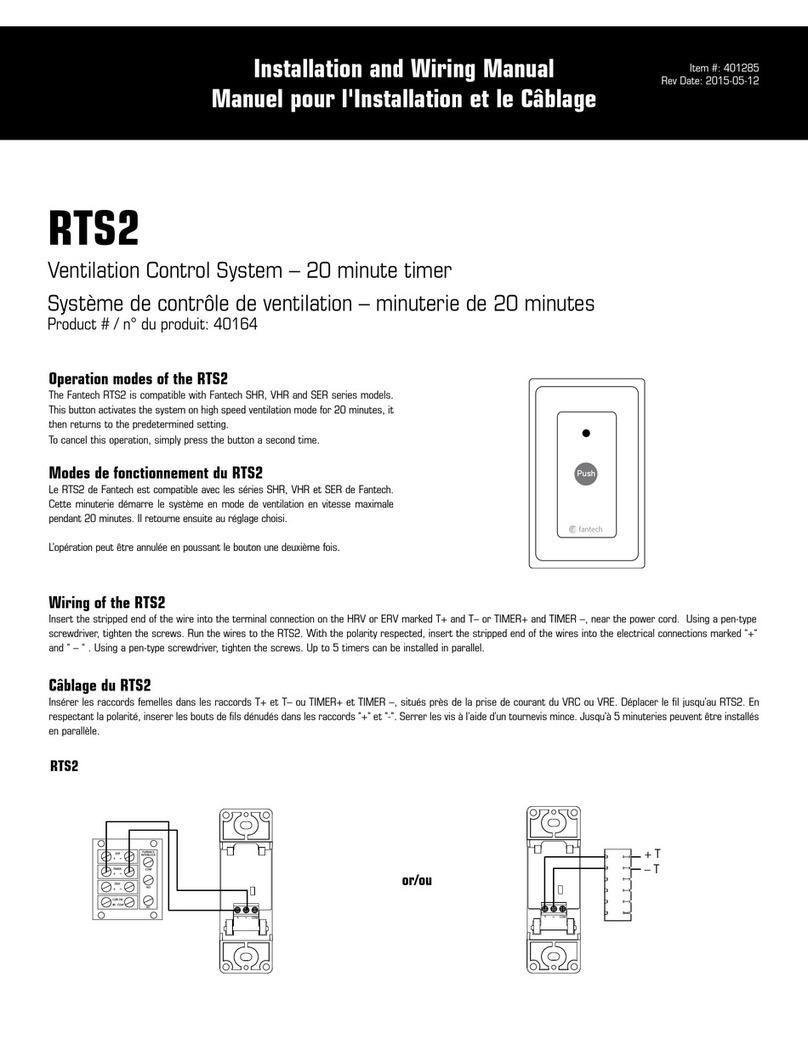
Fantech
Fantech RTS2 Installation and wiring manual
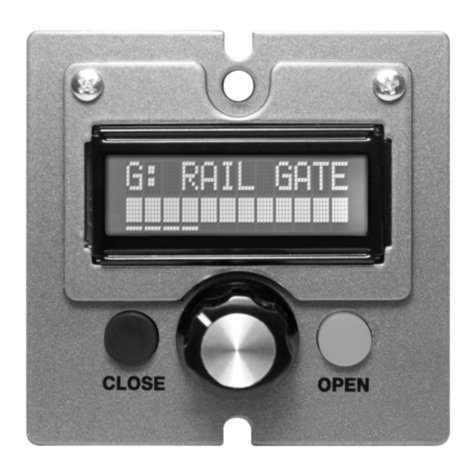
Schlagel
Schlagel VGC-V2 Operating, Customizing And Troubleshooting
